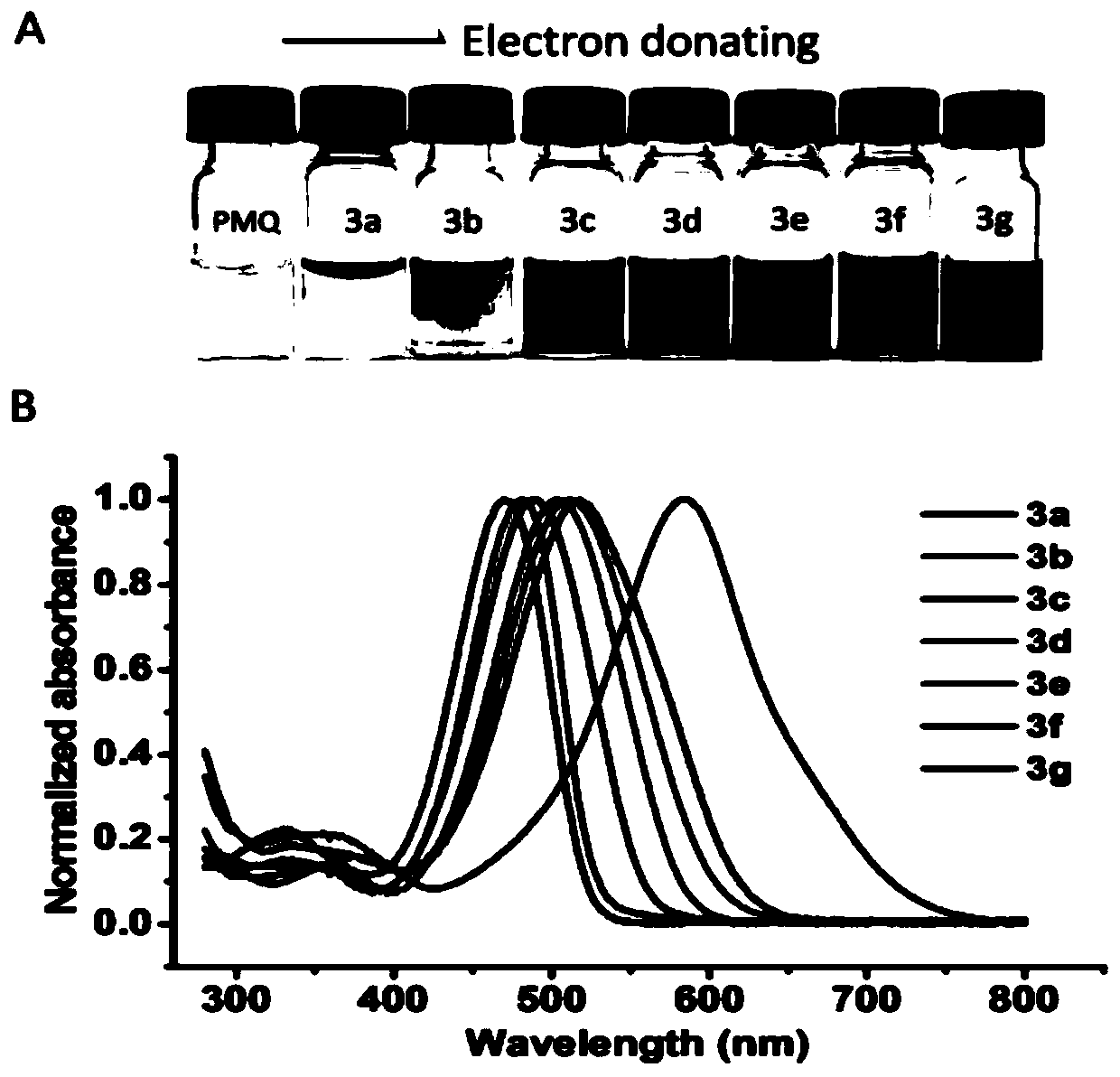Colorimetric detection method for primaquine drugs
A technology of primaquine and detection method, applied in the field of medicine, can solve the problems of interfering with PMQ determination and the like
- Summary
- Abstract
- Description
- Claims
- Application Information
AI Technical Summary
Problems solved by technology
Method used
Image
Examples
Embodiment 1
[0034] The Griess reaction of embodiment 1 primaquine
[0035] Aniline and 1 equivalent of primaquine (PMQ) were dissolved in 5% phosphoric acid, and then sodium nitrite was slowly added at room temperature (25°C). The reaction can be easily monitored by visual observation or TLC following the formation of colored azo products (e.g. figure 1 ).
[0036] The reaction was performed using anilines having various substituents at the para position of the benzene ring. Changing substituent groups can form different colored products. Such as figure 2 As shown, substitutions with electron-donating effects can basically cause a red shift in the UV-Vis absorption spectrum. The spectrum of the strongly donating methoxy-substituted p-methoxyaniline reaction product 3d has the strongest absorption at 504nm, while the spectrum of the strongly electron-withdrawing sulfonamide product 3a has the strongest absorption at 470nm. The donating ability of methyl group is lower than that of me...
Embodiment 2
[0042] Embodiment 2 tests the change of colored product absorbance and time
[0043] PMQ can react with various anilines to generate colored products, and then use this color reaction to perform colorimetric determination of PMQ. Tests were performed with anilines with differently charged substituents (R) (sulfonyl 2a, methyl 2c and methoxy 2d). To test the absorbance versus time, 100 μL of aniline solution (200 mM in 0.2M HCl) was first mixed with 50 μL of PMQ (50 μM), followed by the addition of 50 μL of aqueous sodium nitrite (5 mM). The dynamic change of the absorbance of each aniline at the maximum wavelength was recorded by a multifunctional microplate reader.
[0044] Such as image 3 As shown, the reaction in 2a is faster than that of the other two anilines. The reaction rate of 2c is higher than that of 2d but lower than that of 2a, mainly because the electron-donating effect of the methyl group is intermediate between the two. As mentioned earlier, the same trend...
Embodiment 3
[0046] The selectivity of embodiment 3Griess reaction to PMQ
[0047] The antimalarial drugs 4-aminoquinoline mefloquine (MQ), chloroquine (CQ), piperaquine (PIP) and dihydroartemisinin (DHA) were selected to participate in the Griess reaction alone, or other antimalarial drugs were combined with PMQ respectively. Participate in the reaction after mixing. The result is as Figure 5 Shown, the absorbance value I 504 There was not any response to MQ, CQ, PIP and DHA (all 50 μM), but there was a response to the drug mixture containing PMQ (50 μM). The results showed that the Griess reaction-based approach was highly selective for PMQ and could distinguish other antimalarials commonly used in combination therapy for malaria.
PUM
 Login to View More
Login to View More Abstract
Description
Claims
Application Information
 Login to View More
Login to View More - R&D
- Intellectual Property
- Life Sciences
- Materials
- Tech Scout
- Unparalleled Data Quality
- Higher Quality Content
- 60% Fewer Hallucinations
Browse by: Latest US Patents, China's latest patents, Technical Efficacy Thesaurus, Application Domain, Technology Topic, Popular Technical Reports.
© 2025 PatSnap. All rights reserved.Legal|Privacy policy|Modern Slavery Act Transparency Statement|Sitemap|About US| Contact US: help@patsnap.com



